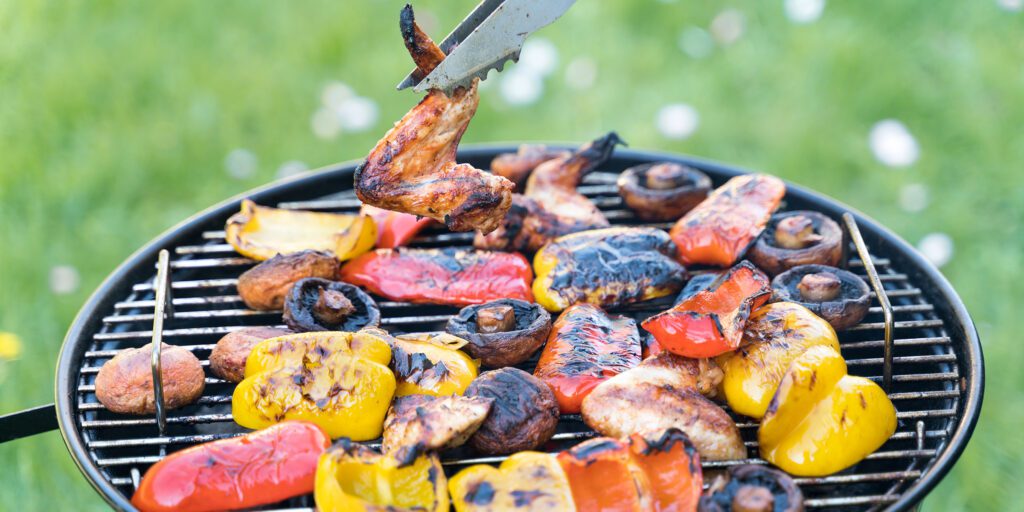This beginner’s guide to grilling provides tips and tricks for perfecting your grilling skills. It starts by discussing the importance of choosing the right grill, whether it be charcoal, gas, or electric. The guide then outlines essential grilling tools such as a grill brush, tongs, meat thermometer, and aluminum foil. It emphasizes the importance of preparing both the grill and the food before grilling. Different grilling techniques, including direct grilling, indirect grilling, and smoking, are explained. Additional tips include oiling the grates, allowing food to develop a good sear, using different heat zones, and letting meat rest before serving. The guide concludes by encouraging readers to enjoy the delicious results of their grilling adventures.
Grilling 101: A Beginner’s Guide to Perfectly Grilled Dishes
Introduction
Grilling is an incredibly popular method of cooking that brings out unique flavors and textures in dishes. Whether you’re a beginner or just looking to brush up on your grilling skills, this guide is here to help you master the art of grilling and create perfectly grilled dishes that will impress your family and friends.
Choosing the Right Grill
The first step in becoming a grilling pro is to choose the right grill for your needs. There are several types of grills available, including charcoal, gas, and electric grills. Each has its own benefits and drawbacks, so consider factors such as convenience, flavor, and cost before making your decision.
Essential Grilling Tools
To get started, you’ll need a few essential grilling tools. These include:
1. Grill brush: A grill brush is essential for keeping your grill grates clean and preventing food from sticking.
2. Tongs: Long-handled tongs are perfect for flipping meats and vegetables without risking burns.
3. Meat thermometer: A meat thermometer is crucial for ensuring that your meats are cooked to the correct temperature, avoiding undercooking or overcooking.
4. Aluminum foil: Aluminum foil is useful for creating foil packets, which are ideal for cooking delicate items like fish and vegetables.
Preparing for Grilling
Before you start grilling, it’s important to prepare both your grill and the food you’ll be cooking.
1. Clean the grill: Remove any leftover debris or ash from your previous grilling session and scrub the grates with a grill brush to ensure a clean cooking surface.
2. Preheat the grill: Preheating your grill is crucial for achieving that perfect sear and preventing food from sticking. Preheat the grill to the appropriate temperature for your dish.
3. Season your food: Season your meat, fish, or vegetables with salt, pepper, and any other desired spices or marinades. Let them sit for a while to allow the flavors to penetrate the food.
Grilling Techniques
Now that your grill is preheated and your food is prepared, it’s time to start grilling!
1. Direct grilling: This technique involves cooking the food directly over the heat source. It’s perfect for thin cuts of meat that cook quickly or foods that can be cooked in less than 20 minutes.
2. Indirect grilling: For larger cuts of meat or dishes that require longer cooking times, indirect grilling is the way to go. This technique involves placing the food to the side of the heat source and cooking it using indirect heat.
3. Smoking: Smoking adds a unique flavor to your dishes. To smoke food, simply add soaked wood chips or chunks to the grill. Put the lid on and allow the smoke to infuse your food during the cooking process.
Tips and Tricks
To help you become a grilling expert, here are some additional tips and tricks:
1. Oil the grates: Before placing your food on the grill, lightly oil the grates. This will help prevent sticking and make clean-up easier.
2. Don’t move the food too soon: Allow your food to develop a good sear before flipping or moving it. This will help create those beautiful grill marks and prevent sticking.
3. Use different heat zones: If your grill has multiple burners, create different heat zones by turning on only some burners. This allows you to have a hot zone for searing and a cooler zone for slow cooking.
4. Rest your meat: After removing your meat from the grill, let it rest for a few minutes before serving. This allows the juices to redistribute, resulting in a moister and more flavorful dish.
Conclusion
Grilling is a fantastic way to cook a wide variety of dishes, from juicy steaks to flavorful vegetables. By following this beginner’s guide and implementing the tips and tricks provided, you’ll be well on your way to becoming a master of the grill. So fire up that grill, experiment with different flavors, and enjoy the delicious results of your grilling adventures!
